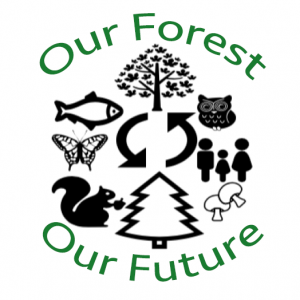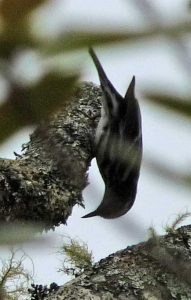Just prior to the last provincial election, the Liberals promised an ‘Independent Review of Forestry in NS’ in response to ever more vocal and widespread discontent with extensive clearcutting in NS. The Liberals won the election and asked Prof William Lahey, a lawyer and President of King’s College to head such a review (Post, Aug 31, 2017).
The forestry review kicked off in September of 2017; Prof. Lahey submitted his report on Aug 21, 2018; it was simultaneously made public, as requested by Prof Lahay.
A lot has changed since Lahey submitted his report, as recorded on this blog, but not in the woods.
Interviewed by Louise Renault on CBC’s Information Morning, Shelly Hipson describes and explains her frustration with the lack of significant change in forestry practices, post-Lahey Report.
Shelly is a resident of SW Nova Scotia and founder of the Facebook group People for Ecological Forestry in SW Nova Scotia.
The interview is available as an archived audio –
Discussing NS forestry on second anniversary of Lahey report (audio)
CBC Information Morning, Aug 10, 2020.
An “abbreviated transcript”* of the interview is posted below. Highlighting is mine.
__________________
*I often post “abbreviated transcripts” of interviews on radio and TV as a matter of record, a prime objective of this blog being to keep track of Nova Scotia forestry in the news (see About this site). One can listen to the interviews, but in this rushed world it’s faster to read the transcript, albeit you miss some of the nuances. It is not Hansard, and for the sake of getting though it in less than a day, the transcript is not always precise, but I attempt not to change the essence of what is said in any way, and in most cases one can check out the original audio files or videos. I also do it because it makes me listen carefully to what is being said, whether I like what’s being said or not.
Shelly zeroes in on two key issues: (i) clearcutting has continued on Crown lands pretty well unabated despite the professed commitment of Lands and Forestry to accept and respond to the Lahey recommendations; and (ii) L&F has mis-represented their commitment in regard to the “Triad”.
THE ABBREVIATED TRANSCRIPT
CBC: The Lahey Report was supposed to change how forestry is conducted in NS, but 2 years after the report was released in Aug of 2018. some say the picture in the woods is not looking any better and may even be worse… As we approach the two year anniversary, we are speaking with some people about the impact of the Lahey Report so far. Shelly Hipson has been keeping an eye on this. She is a community activist. She manages the Facebook group People for Ecological Forestry in SW Nova Scotia.
Good Morning Shelly. In broad strokes what did the Lahey Report recommend should change about how forestry is done in this province?
SH: The Lahey Report outlined 45 recommendations, and its focus was on changing and a shift towards Ecological Forestry. So we felt that would look like is a gentler touch in the woods. He also focussed on the Species-at-Risk Act being implemented, to look at the biodiversity and to change some of the criteria in determining Old Growth Forest, because it was complicated. So we were pretty excited about those sorts of things being introduced.
CBC: Have you seen any changes in the SW part of the Province?
SH: Absolutely not and it’s been very disheartening. In fact I have been keeping tab of all the proposed cuts by the department, they come out every 10 days and I have been taking that data and putting them into an Excel spreadsheet to see what’s is actually going on…
CBC: And what’s going on?
SH: The most popular harvest is what’s called a Variable Retention of 10%… the 10% means that only 10% of the forest will remain standing in that polygon, in that forest in that habitat, in that ecosystem; they are removing 90% of the forest. The highest they go is 30%, that means 70% is removed…so what we have looked at here, is 88% of all of the cuts that have come in the last approximate yeas and a half right up to Aug 4 has been clearcuts, even aged– that means they grow up all at the same time this is not what Lahey recommended and they will be monoculture..,so again they are still looking at modifying the forest primarily for the forest industry.
CBC: There is a particular concern with how much land will be set aside for High Production Forestry [HPF],,,the Lahey report had recommendations about how to classify forests, can you talk about that?
SH: What Lahey decided to do is a three- legged model [the Triad]. One leg is conservation, one is Ecological Matrix, and the other is HPF. So conservation has already been set aside as Protected Areas. The two we are concerned with are what’s now referred to, instead of Ecological Forestry, it is called the Ecological Matrix; and potential High Production Forestry [HPF].
…They have told us that the Ecological Matrix is going to be the majority of the land base, of all the Crown lands it is going to be the best: 47%. And HPF is only going to be 18%. So when we first look at that, it sounds pretty good… But it is a scam in my opinion because when we break it down and look at the fine print under that chart, Table 2 in the HPF Discussion Paper, they have included in the Ecological Matrix, are things like wetlands, bogs, barrens, cliffs, sand dunes, coastal rocks, beaches– they have actually added those up and put them in the Ecological Matrix.
 CBC: So those sound like areas where you cannot easily cut or there may not even be any viable trees.
CBC: So those sound like areas where you cannot easily cut or there may not even be any viable trees.
SH: You’ve got it. When we take out all of that and just look at the forested land and compare, what’s left is 356,000 hectares [of Ecological Matrix] compared to 333,000 hectares of HPF, so it’s basically 50%. It is not 47% [Matrix] and 18% [HPF], it is 50% that is going towards HPF.
Fifty percent of our total forested land, Crown Public Land is going towards HPF…Tree Plantations, that’s what Irving does in NB. That will involve, [as] the Lahey report recommended, spraying glyphosate, it kills of all of your hardwoods, so their preferred species, the spruce and fir grow on these plantations.
At first, setting aside some of the lands for HPF sounded a little promising but when you start to look at the scope of this project and the spraying, it’s going to be our air, water, soil… we know better, it’s an old-fashioned, outdated type of management. I think Mother Nature knows how to grow trees herself.
CBC: What would you like to see happen Shelly?
SH: We have petitioned, we have written letters…nothing seems to work The system we are working under is rigged, it’s fixed, so that the local people who care about the land, who live here have no voice. What I would like to see is somehow at the Municipal level, the Community Level, that we are able to be heard and our thoughts for Crown land be incorporated.
If Government doesn’t allow us to do it at the provincial level, it has to come from the people from the ground up. We need to be heard, we need to find an avenue for our voice. The Minister will not even meet with us and it’s most frustratinig. The people who are on my [Facebook] page are saddened, frustrated and angry at what they see in the woods and that is clearcut, after clearcut after clearcut.
CBC: Shelly, Thank you so much. I am sure we will be checking in with you again…Tomorrow we will hear from one of the people involved in consultations on the Lahey Report about their frustrations with the process.
Thank you Shelly Hipson, for your clear, articulate, objective, and heart-felt critique of L&F’s response to the Lahey Recommendations. There can be no doubt that L&F misrepresented the proportion of HPF in the Triad, deliberately, or through ingrained professional bias. Either way, it needs to be corrected and the area assigned to HPF reduced accordingly.
Related Posts
 Shelly Hipson: Concerns about how Crown lands will be designated for High Production Forestry in Nova Scotia 11May 2020
Shelly Hipson: Concerns about how Crown lands will be designated for High Production Forestry in Nova Scotia 11May 2020
Post on NSFn on May 11, 2020
HFC Response to High Production Forestry Discussion Paper
Posted on Healthy Forest Coalition Public Facebook Page May 21, 2020 The document is Dated March 31, 2020
A recap some of the happenings with government and Crown land, 2008-2020
Post on People for Ecological Forestry in Southwest Nova Scotia. Aug 7, 2020
Plourde/EAC offer constructive analysis of The Report from the Independent Review and suggest ten things the government should do immediately
NSNN Sep 8, 2018
Some reservations about The Report on the Independent Review of Forest Practices in Nova Scotia
NSFN Sep 7, 2018


